SME Finance Policy Guide
SME Finance Policy Guide
SME Finance Policy Guide
You also want an ePaper? Increase the reach of your titles
YUMPU automatically turns print PDFs into web optimized ePapers that Google loves.
G-20 <strong>SME</strong> FINANCE POLICY GUIDE<br />
9<br />
CHAPTER B<br />
Access To <strong>Finance</strong> For <strong>SME</strong>s in<br />
Least Developed Countries (LDCs)<br />
<strong>SME</strong>s play a key role in economic development and<br />
make an important contribution to employment and<br />
GDP. 4 Financial access is critical for <strong>SME</strong>s’ growth and<br />
development. In their early stages of development,<br />
<strong>SME</strong>s rely on internal sources of funding, including<br />
the owner’s savings, retained earnings, or funding<br />
through the sale of assets. As firms starts expanding,<br />
external sources become more important and their<br />
availability can determine the firms’ growth possibilities.<br />
External finance is positively and significantly<br />
associated with productivity. Conversely, financing<br />
from internal funds and other informal sources is<br />
often negatively associated with growth and firm<br />
performance. 5<br />
However, access to finance remains a key constraint to<br />
<strong>SME</strong> development, especially in emerging economies.<br />
Access to finance is disproportionately difficult for<br />
<strong>SME</strong>s in LDCs, with 41 percent of <strong>SME</strong>s in LDCs reporting<br />
access to finance as a major constraint to their<br />
growth and development, as compared with 30 percent<br />
in middle-income countries, and only 15 percent<br />
in high-income countries. 6 Access to finance through<br />
bank loans not only decreases with the level of country<br />
income, but also tends to be more concentrated among<br />
large borrowers. Other common sources of finance for<br />
<strong>SME</strong>s, such as leasing and factoring, are not yet well<br />
developed in LDCs. Annex I presents a statistical overview<br />
of access to finance for <strong>SME</strong>s in LDCs.<br />
LDCs stand to gain significantly from policy guides<br />
that support improved access to finance for <strong>SME</strong>s. An<br />
impact evaluation by Banerjee, Abhijit, and Duflo in<br />
India in 2008, suggests that credit constraints for<br />
Indian <strong>SME</strong>s were a leading reason for the productivity<br />
and investment gap between the United States and<br />
India. There is evidence that, in developing economies,<br />
<strong>SME</strong>s could contribute more to economic development<br />
than they currently do. <strong>SME</strong>s tend to be<br />
smaller in developing countries, suggesting greater<br />
constraints to growth, including financial constraints.<br />
Recent World Bank research 7 using a database for 99<br />
developing countries, found that small firms are<br />
important contributors to total employment and job<br />
creation, but that small firms also have lower productivity<br />
growth than large firms. In other words, while<br />
<strong>SME</strong>s employ a large number of people and create<br />
more jobs, their contribution to productivity and<br />
growth is less clear. The authors concluded that growth<br />
and increases in productivity require a policy focus on<br />
the potential obstacles, which include constrained<br />
access to finance and encompass growth capital.<br />
However, LDCs can face a more severe set of challenges<br />
in providing enabling policy and legal frameworks<br />
for <strong>SME</strong> finance, relative to middle- and<br />
high-income countries that may have stronger institutional<br />
capacity and higher levels of access to finance.<br />
Financial infrastructure, such as credit information<br />
systems, payment systems, and secured transactions<br />
and insolvency frameworks, are generally weaker and<br />
less developed. LDCs may therefore need to prioritize,<br />
adapt, and sequence the <strong>Policy</strong> <strong>Guide</strong> components<br />
outlined in this paper.<br />
4 Ayyagari, Beck and Demirgüç-Kunt (2007)<br />
5 Beck, Thorsten, Asli Demirgüç-Kunt, and Ross Levine. 2005<br />
6 World Bank Enterprise Surveys. Numbers by income group are simple averages of all countries with data available that fall into the group.<br />
7 Ayyagari, Demirguc-Kunt, Maksimovic (2011)



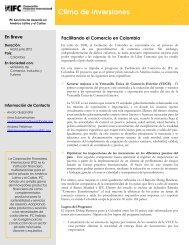
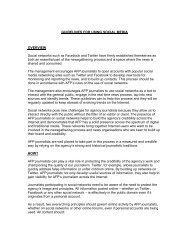
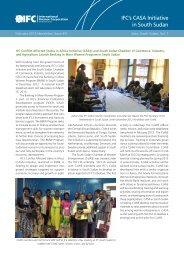

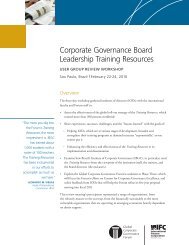




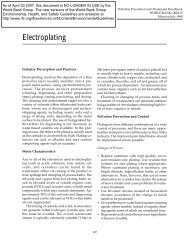

![Print a two-page fact sheet on this project [PDF] - IFC](https://img.yumpu.com/43449799/1/190x245/print-a-two-page-fact-sheet-on-this-project-pdf-ifc.jpg?quality=85)


